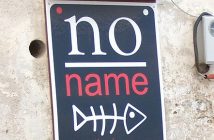Business Plans Don’t Work (But You Do)
I have to laugh at the thought of writing a business plan as “Step 1” of starting a business. Sure, it makes sense when you think about it, and it especially makes sense after reading your fiftieth blog post from yet another business “guru” about why it’s a good idea to solidify your business plan before taking this giant, anxiety-inducing leap into entrepreneurship.
But in my own experience—and I’m not alone in admitting this—writing a business plan is often closer to Step 100 of starting a business. At that point, writing the plan is part of having started a business; it doesn’t get the privilege of anyone’s focus until later down the line.
I tend to use the same excuse for not having a business plan: they take a lot of time to write, and my time is better spent doing actual business, rather than on writing about what may or may not happen in the future. In most of the new ventures and small businesses I’ve been a part of, that was a common excuse as well. Another commonality, though, is that the business plan eventually got written, even if it didn’t always take the same form.
What’s Your (Plan) Style?
The concept of the business plan seems pretty straightforward. But after some mistakes and presumptions, I’ve learned that a business plan can take many forms. There’s the “standard” document with which you’re already familiar, but depending on your industry, audience, goals, and your own company’s style and personality, you might benefit from a different “style” of business plan.
At one small company I worked at, I was hired on with three other people for, I later found out, the sole purpose of helping the owners put together a non-traditional business plan. The end result was a full-fledged audio-visual presentation, complete with narration, motion graphics, windstorm sound effects, and a “Rip Van Winkle” reference for some reason or another.
I don’t remember much about the business plan’s content, but I’ll never forget how I felt when we presented it to a group of investors, whose money was our only hope of surviving another month (another bit of info I wasn’t privy to until later on).
I remember grinning painfully through uncomfortable small talk that lasted way too long. I remember my hands shaking as I pulled the business plan up on my laptop and clicked to play. The shaking moved to my voice when I realized my laptop had frozen while trying to play the presentation. My bosses were no help in making light of the technical difficulties, so I tried some more small talk as damage control while my laptop rebooted. Somehow I pulled it off—there was a light round of commiserating laughter, and I let that steady the shaking and fuel me through the next thirty seconds of rebooting and reloading.
The moment the presentation played, I backed away and used my shirt sleeve to blot at the sheen of sweat that now decorated my forehead. A lingering pang of adrenaline forced its way through my body, but I managed to stay upright in spite of the sudden nausea and fatigue.
The presentation was twenty minutes long. Ideally, I’d have used that time to compose myself, to let my body relax and my mind quiet. Instead, I spent twenty minutes wondering whether my actions had just doomed us all. I critiqued the presentation with a brand new perspective as it played, wondering whether the many mistakes—glaring only to me and my two co-workers, who had put as much effort into this presentation as I had—would destroy any credibility we’d built up in the minds of these powerful investors.
As it turned out, all that worry was for naught. The investors loved the presentation. They’d easily forgiven the transgression with the laptop, and in regards to my nervousness throughout the meeting, they either didn’t notice or didn’t care.
That made it all the more painful when, less than a month after the presentation, I was out of a job. It didn’t matter how much the investors liked our plan, our company, or our people. It didn’t matter how hard I’d worked, how much stress I’d survived, or how acutely the worry had affected me during the presentation: shortly after the meeting, they’d decided to hold off on allocating any more funding for the time being. It had nothing to do with us, and they were very sorry.
My bosses were very sorry, too, when they explained to me and my co-workers—all of us having poured our hearts and souls into bringing to life our employers’ vision for their saving grace and business plan—that they couldn’t afford to pay us anymore.
We were laid off just in time for Christmas.
At another small business I worked at, this one brand new when I joined, our business plan was very much the “typical” document you’re familiar with. It was exhaustive in its information yet simple in its language. It had all the correct sections and appendices and a concise, effective Executive Summary.
In writing the plan we did everything correctly. We did everything the professionals and consultants and gurus told us to do. Unfortunately, that company closed its doors about a year after opening. So, even doing everything the “right” way is no guarantee of success.
At yet another company, we had a few different styles of business plans. For a short stint we had one of those trendy “slide deck” plans. It was a Power Point presentation of about ten or twelve slides that was beautifully designed, but it was vague and jargon-riddled in explaining what we do and why clients should choose us over the competition (of which there is plenty). I don’t think any of us were completely happy with it, but this was the first time in the company’s existence that we even had a business plan. So, it was better than nothing. We let it sit.
Soon after, a potential investor asked if we had a business plan that he could see. This was after our head of business development spent over six months networking, making connections, wading through bull crap, getting stuck in and extricating himself from said bull crap, and starting the process all over again in the interest of finding relationships worth vetting, then pursuing, and finally nurturing.
This was one of those rare opportunities. And with this opportunity we recognized that our well-designed but jargon-riddled slide deck wasn’t going to cut it for this investor. And that meant the plan wasn’t going to cut it for our company in general. We knew what we had to do.
Our biz dev guy did the right thing by telling the lie of omission: “Yes, we have a business plan”—kind of—“and we’ll send it to you by the end of the week.”
By the end of the week. With that simple phrase we’d placed the mother of all deadlines on our shoulders: we had to write our business plan basically from scratch; we had to create the masterpiece we were supposed to have crafted years ago; we had to cram hundreds of hours of work into the span of three business days. And the result had to be good.
We divvied up the work, made a Red Bull run, reminded ourselves what was at stake, and got a few choice expletives out of our system. Then we sat down and got to work.
Writing a business plan wasn’t a new experience for any of us. But it felt new, because we had a specific goal, a specific purpose, and a distinct vision of our audience. Nothing we’d already written was good enough. None of our previous projections were clear enough. None of the information seemed relevant.
And not only were we starting from scratch, but we did it with the knowledge that we’d have to pull it all together in a tenth of the time we needed. In the end we were forced to cut corners. We removed essential elements because they weren’t good enough. We amended our definition of “good enough.” And as the clock ticked, we amended it again. We made decisions we weren’t comfortable with, because the only alternative was to throw this amazing opportunity—and many others we weren’t even aware of yet—down the toilet.
But we made it. We made our deadline. We emailed that bad boy out, and for better or worse it represented our company—our passion—and all our efforts. Not just the effort of three days’ worth of late nights, early mornings, stress headaches, and lukewarm coffee, but of all our continued efforts for the next three-to-five years. That’s what our brand new business plan projected, and we intended to see it through.
Once our business plan was out there in the universe, the worry didn’t stop. We stressed every day about whether or not the investor had read it, what he thought, whether he liked what he read, whether he thought we’re a bunch of phonies, whether we’re able to make rent next month, blah, blah, blah…
But I think we’d have felt that way regardless. No matter how much or how little time we spent crafting our business plan, we would still be there, biting our nails, checking our email incessantly, asking each other, “Have you heard anything?” That’s what happens when you get a group of passionate people together in a room and give them a common goal. And an unhealthy amount of caffeine.
You Have a Plan…Now Use It
“So, what’s next?” It’s a question every business owner gets used to asking and answering. And it’s quickly becoming my mantra. What’s next? When you finish one project—including your business plan—you move on to whatever’s next. You can’t worry about the outcome, dwell on the mistakes, or rely on hypotheticals. You wrap it up, close it out, take a breath, and move on. That’s where your business plan becomes an invaluable tool. No matter what your plan looks like, use it as a starting point: it’s your fallback, your compass, your guiding light for moving your business forward. A plan means nothing until it’s put into action, and the blood, sweat, and tears you put into writing your business plan is nothing compared to what you’ll face as a business owner from here on out.
So, what’s the plan? What’s next? Well, now you get back to work and find out.




